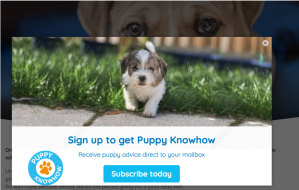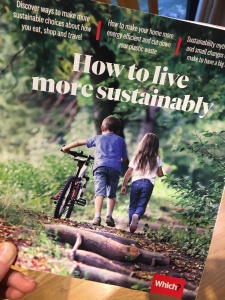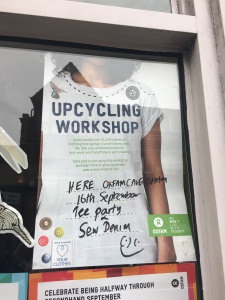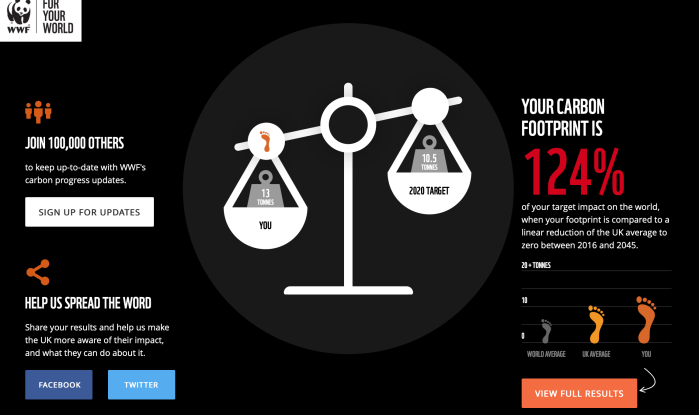Fundraising often feels about what you can get out of someone. What can you take from them. Hence the focus is often on the ask.
Now I believe you need to think what can you give back.
In a world where everyone is drowning in the noise of information, attention is now one of the most precious resources on the planet. If your communications are always about what you can take, the danger is you will begin to lose attention. People will switch off. And once you have lost their attention it will be harder to get it back. Which means you have to continually fill that “leaky bucket” – that horrible analogy of needing to recruit new donors and supporters as a result of those that turn away and “unsubscribe” or “lapse”.
But a way to keep my attention, and even to get it in the first place, is give me something of value.
What value can you offer?
If you stop and think for a minute I am sure you can begin to see ways your organisation has expertise in a particular area, including those who you can reach out to (experts who admire what you do). Let me give you two personal examples of charities that would not normally be on my radar but whose emails I look forward to due to the value they give me.

Look back at your emails from the perspective of the recipient
Just over a year ago my asthma got a lot worse. I called a helpline that happened to be run by Asthma UK. They gave me some great advice so I just had to give a donation. As a result I started getting their email communications. About this time last year I was about to hit “unsubscribe”. Just about every email was about getting something from me i.e. take not give – such as “donate today”, buy raffle tickets, or fundraising from bake sales to running marathons. After a bunch it was getting a tad tiresome. Don’t get me wrong I get that Asthma UK needs to raise money. It’s just that approach in every communication wasn’t going to keep my attention.
Then just as I was about to press “unsubscribe” I got a different sort of email. it was from Dr Andy. It was how exercise would be good for my asthma. It felt different. Other useful content I subsequently received included advice on how to use an inhaler. Interspersed or as part of the same email were occasional fundraising asks – such as the chance total up places on a marathon (but often in a relevant context e.g. related to doing exercise).

Think of content that gives value
So over the year they have kept my attention. I even learned about their campaign to get rid of prescription charges.
I don’t know for sure, but I’m guessing their open rates are getting better and their unsubscribes are dropping. More to the point they have kept the attention of people like me. No doubt they have realised that many supporters will be asthma sufferers or have family who are. And perhaps recipients are now recommending the newsletter to others they know who have asthma as a result of the value it gives?
You might think this is obvious content for Asthma UK to create. It is, but it took someone to make the switch in strategy. And a good thing too otherwise I’d have just press unsubscribe.

What problems does your audience need to solve?
My second example is the Blue Cross. I heard an advertisement on the radio for a new service they had set up called “Puppy Know How”. Basically tips on looking after a puppy. As we were struggling with our new addition, Lola, I went to the website to sign up. There you include the age of your puppy to receive advice that relates to their age. On Lola’s birthday I got guidance on how to make a cake for your pups first birthday. Blue Cross help look after and re-home unwanted animals. This wasn’t content about what they do – but it was content that they do have expertise on (and no doubt it helps deliver on their mission and reduce unwanted pets too). As a result they have my attention and I’m fairly sure a great deal of their supporters are dog or cat owners (they have a kitten version too).
It probably helps if you think of the context when you send content. The more you can do this the more you can tailor content that will attract my attention. For example, the Blue Cross send emails depending on the age of my puppy and Asthma UK often inform me about issues relating to the time of year (it’s how I discovered the real Christmas tree we get each year is a reason come December my Asthma seems much worse). I liked the subject line in the run up to November 5th.

Produce content of value

What topics interest your audience?
Of course it’s not just charities who can produce such content of value. I noticed Which, the consumer magazine, recently produced a guide for living sustainably, and at the start of the year a free newspaper produced by a supermarket had a section on getting fit.
But plenty get it wrong. I just unsubscribed from a newsletter from a company who sell garden plants online – because all the emails were about me buying from them. It could be a Winter sale. Or 30% off (but offers that anyone who visited their website would get). The closest they got to giving some content of value was gift ideas, but thats still about buying. Yet they could have given me top gardening tips – what I need to do right now. That may have kept my attention until I was ready to buy.
So ask what value can you offer? And how does this connect with your beliefs and values?

Oxfam’s up-cycling workshops a great example giving value and engaging audiences interested in sustainability
For example, say you are cause working in some aspect of the environment, whether its climate change, woodlands, or conservation. Right now you could be providing guidance and tips on living a sustainable life (if Which magazine can do it then surely a charity working in this space can), or ways of reducing your carbon footprint. You could do this even if that’s not directly related to what you do but aligns with your values and beliefs. As a charity you carry a degree of trust (which is easily lost if you continue to just communicate you want to ‘take’ from people).
This can work at every level. For example, I noticed over the summer how Oxfam were offering up-cycling workshops via their shops. Smart. And I see from the British Heart Foundation website you can get healthy recipes (but I couldn’t find somewhere to sign up to get content from them on healthy eating). Via WWF you can find out your carbon footprint (I’m 13 tonnes/year and need to cut 2.5 tonnes) – although I’ve yet to see if the newsletter I then signed up for entitled ‘carbon progress updates’ is the standard one about them, or one that helps me reduce my carbon footprint. I hope the latter with a bit about the former.

A definition of marketing I recently read is “the process of determining, communicating and delivering value in order to obtain and retain customers“. Fundraising is clearly close to marketing (and sales) so the question it made me think about is “how can fundraising deliver value to supporters to attract and retain them?” Of course there are other important ways – such as demonstrating the impact of someone’s donation, making people feel great when they donate or raise funds. But now in an age when even your organisation is a media channel, whether they like it or not, you have an opportunity to create and give content of value.
It’s not always about you
To do this well means you need to think about your audience – their wants and needs – and how you can meet them. So who is your audience? That makes you think about them not you, and content that connects the two of you. Radical eh? And maybe the very audience you are providing valuable content to can contribute back e.g. what they are up-cycling, or steps they are taking to reduce their carbon footprint, or recipes for eating healthily. Chances you are going to increase engagement with them by adopting this approach.
So think about what expertise you can give that would be valuable to that audience. Content that will keep their attention and is sharable too. This may mean creating content that isn’t directly about your work too. Hence I can see many charities just won’t invest the time to do it at all or do it well.
But if you do invest time and thought then when you do ask, first you have my attention, and second I am much more likely to give when to do want to ask me. After all you have been giving me something of value. Of course, when I give, you also need to deliver such a great experience I’ll value that too. So good I’ll talk about it – but that’s for another blog…


